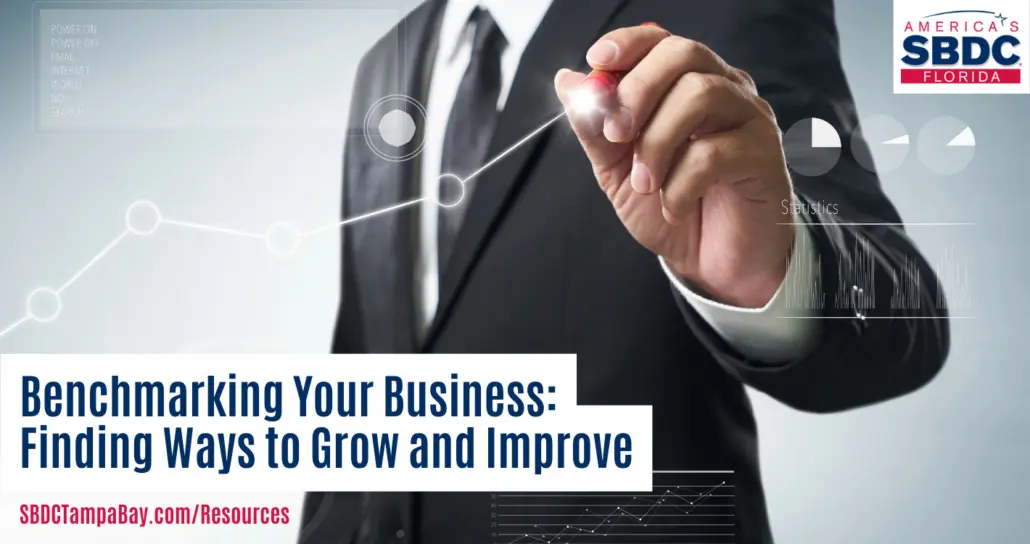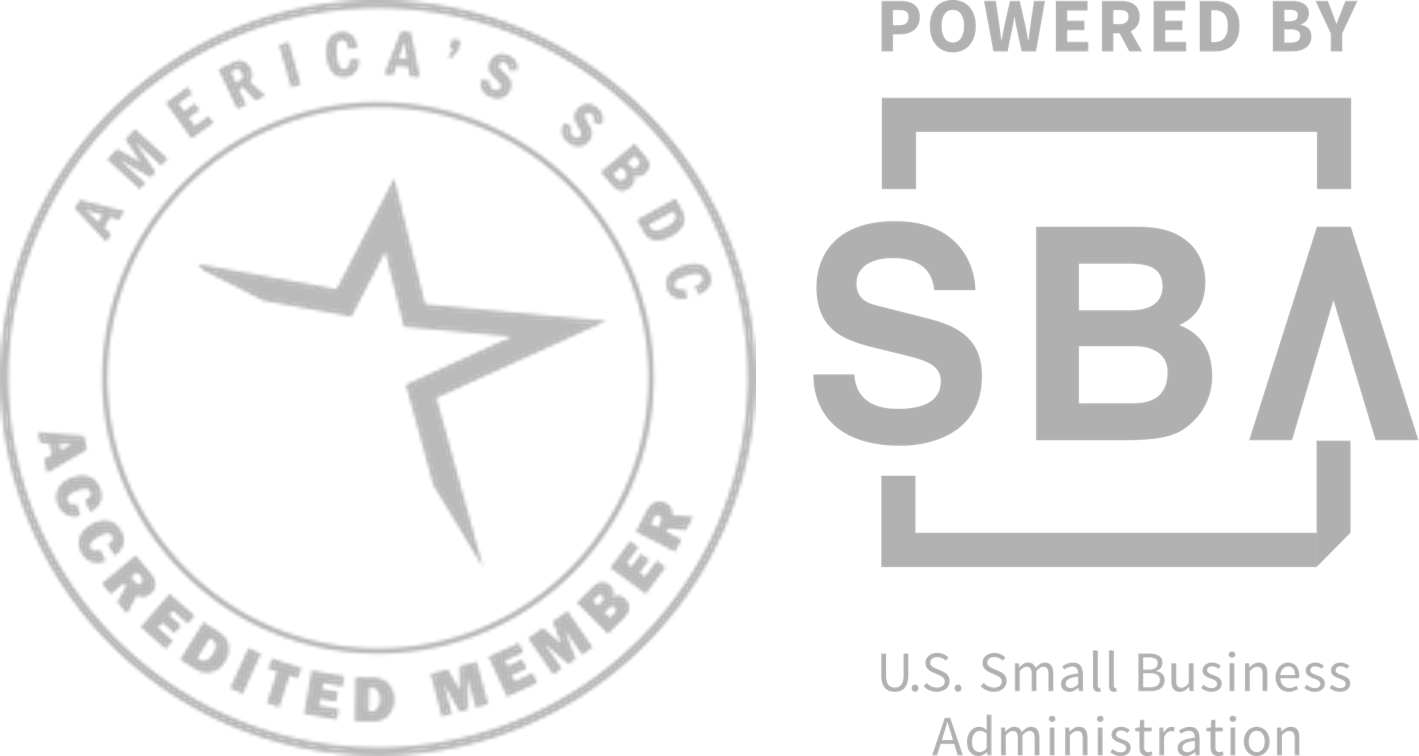Benchmarking Your Business: Finding Ways to Grow and Improve

by Christine Jaros | July 12, 2023
You don’t have to be an NFL football fan to recognize the name Tom Brady of the Tampa Bay Buccaneers. Why is that? Because, simply put, his stats have made him a sports legend. One can even say Tom Brady is an entity which has surpassed so many historic football records and playing norms that he is now the measurement against which all future football stats will be compared. It’s his outstanding metrics that now positions him as the all-time benchmark for quarterbacks. Additionally, his high performing capabilities well into his 40s have exceeded most athletes of any sport, again, positioning him at the top of an industry. So, if the sports world and player’s positions all have comparative standards or benchmarks, you better believe your small business and industry have benchmarks too.
What is Benchmarking?
Benchmarking is a standard of excellence against which a comparison is made. It’s a way in which companies measure their performance (both internally and externally) evaluating business strategies or operating models, company processes, and numeric (financial) outcomes and results, and determining a reference point against which these metrics are compared. Benchmarking provides you with insights through which you can identify multiple areas of performance improvements and opportunities.
Internal Benchmarking
Typically, small business owners set goals and objectives. While this is a good first step, it is not enough if you want to sustain your business over the long run, achieve growth, move ahead of the competitive pack, and establish yourself as an industry or product/service leader – even if it’s in your local area.
Most often used internally by companies to compare their performance to themselves, many companies analyze their financial metrics (sales, revenues, expenses, profits, production capacity) by looking at year-over-year or month-over-month, as a quick benchmark of their overall financial health and general operational flow. If sales are steady or up, business must be good, right? Well, not always.
External Benchmarking
An elevated analysis can take you to the next level. By comparing your performance to external benchmarks – like competition or outstanding processes, products, or business leaders (and yes, industry financial metrics), you can identify areas to be addressed for either improvements or growth opportunities. For example, perhaps your biggest competitor has faster shipping methods, greater brand reach (has penetrated multiple states while you are only in Florida), or an expanded service line offering that blows your service assortment away. Maybe they have a significant social media following, or their products are in every retailer you shop. These elements can comprise a list of key benchmarks against which you want to compare your business. It takes analyzing those dynamics external to your business to highlight what is occurring beyond your space in the marketplace. With this comparative information, you can now challenge yourself against others selling/servicing basically the same target customers, which is how you improve and grow.
Alternative Industry Benchmarking
Look also at alternative industries. For instance, Amazon turned all e-commerce shipping on its head. This process change affected every industry with an online selling platform. By offering free and 1-to-2-day shipping, literally almost every business in the e-commerce space now must challenge themselves to meet or exceed Amazon’s outstanding customer service/shipping capability. It doesn’t matter if you are selling homemade cupcakes or rebuilt stereo equipment, there is a high performing shipping metric out there that sets a reference point against which everyone battles. Companies with outstanding business models provide the proven capabilities for a small business to adapt, replicate, and grow, all on someone else’s dime.
Benefits of Benchmarking
Benchmarking gives small business owners answers about how the business is really performing. The ability to grow and prosper is related to market viability. If you cannot sustain a competitive foothold, ultimately your business will fail. Remember the adding machine? What about the VCR? How a company compares to competition provides the critical information for establishing a sustainable growth plan. This could also include a plan for product/service innovation, a plan for pivoting the business if your economy turns south, or a plan for chasing a new market – like drone deliveries if the appropriate conditions present themselves.
Benchmarking Steps
- Identify your direct competitors and evaluate their products/services, prices, channels of distribution, social media, and financials, if possible.
- Obtain an industry overview.
- Now do the same for those indirect competitors (those who share your customers, but sell related products, not identical products).
The importance of charting your internal metrics should require no explanation. However, also understanding the position and performance of competitive businesses will give you added value as well as an advantage, provided you start benchmarking those dynamics.
Overall, analyzing your business is good, analyzing your competition is great, and identifying gaps, problems, and opportunities is excellent. Setting a plan and acting on it will turn you into a benchmarking gold star.





Christine Jaros
Consultants, Jaros, TampaSpecialties: E-commerce, Marketing & Sales, Startup Assistance, Organizational Development Christine Jaros provides business consulting in the areas of startup, business plan development, marketing and sales, e-commerce, finance, wholesaling and retailing, and business management. Before joining the Florida SBDC at USF, Jaros owned her own apparel wholesale sales and consulting business in New York City for 14 years. She has more than 35 years of experience as a professional businesswoman. Jaros built a global-focused career specializing in manufacturing, marketing and sales with organizations including Bidermann Industries, Liz Claiborne Inc, and Hartmarx Corp. Working with iconic brands such as Yves Saint Laurent, Liz Claiborne, Calvin Klein, Polo-Ralph Lauren and Austin Reed, Jaros grew her portfolio of skills to include international sourcing and distribution. She is a certified TTI DISC Certified Professional Behavioral Analyst and TTI DISC Certified Professional Driving Forces Analyst and a certified Associate Business Continuity Professional (ABCP). Jaros obtained her bachelor’s in business management and marketing from Ohio University. She went on to study fashion and apparel in Paris, France, and later received a finance-focused Executive MBA from Pace University in Manhattan.